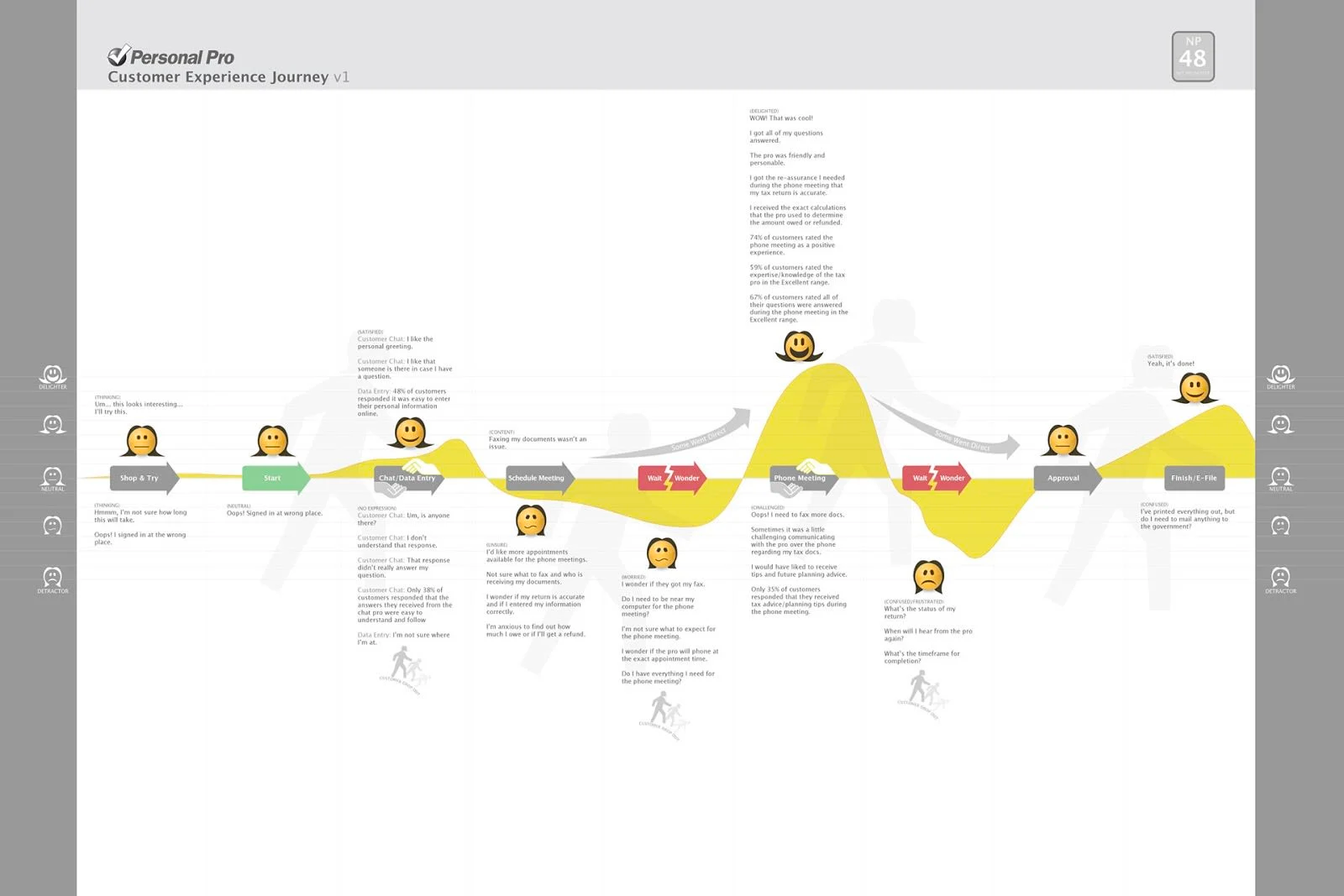
Photo by UX Indonesia via Unsplash
Journey Mapping Method
A journey map is a holistic, visual representation of a user’s experience with a product or service over time. Journey maps combine data and insight from other research and discovery methods to provide a detailed description from the user’s point of view of steps taken, decisions made, successes, pain points, and emotions felt.
Journey maps help designers understand the user’s motivations and needs at each step of a process, from the earliest earliest phases of researching a product or service all the way through adoption, providing crucial insight for designing solutions that better meet user and business needs. The journey map’s visual and storytelling elements also help it communicate research data and findings to broader audiences within an organization.
Preparation
Journey Mapping is often more effective when it is informed by these complementary methods.
-

Task Analysis
Observe users in action to understand how they perform tasks to achieve goals
-

Stakeholder Interviewing
Understanding the perspective and influence of those invested in a project's success
-

Contextual Interviewing
Observation of users performing tasks in their own environment
-

User Interviewing
Understand the tasks and motivations of the user group for whom you are designing
-

Use Cases
Written descriptions of how users will perform tasks with your product or on your website
-

Scenarios
A specific user's context, motivations, and goals for visiting a website or app
Steps
- Define business and user goals
Clearly articulate the organizational goals for the product or service, the design and business goals for the mapping exercise, and the goals of the target user the map is to represent. - Gather research data
Effective journey maps are based on qualitative and quantitative data collected across a range of activities. Review and incorporate existing research as you create your journey map, and note where gaps in understanding indicate the need for additional research. - Identify touchpoints and channels
Touchpoints describe what users do and how they do it. Channels describe where the interaction takes place (e.g. website, call center, native app, or in-store). - Create an Empathy Map
Empathy maps describe what users do, think, feel, say, and hear in a given situation. They help you understand and articulate users’ emotional state, and provide the basis for illustrating the peaks and valleys of frustration, anxiety, happiness, etc. - Sketch the journey
Visualize the order in which users exhibit behaviors, use information, make decisions, and feel emotions. Group elements into phases related to the narrative of each user. Integrate touchpoints, channels, empathy insights, and other research to show the user’s course of motion across the timescale as a whole. Include the user’s feelings at each touchpoint. - Review, refine, and revise
Review your draft journey with team members and subject matter experts to gain new insight and integrate new perspectives. Use these to identify additional opportunities to make your journey map more accurate, more expressive of the data, and more useful for the design process. From time to time, evaluate your map to make sure it remains accurate. Revise as necessary to account for evolving research, product development, and user and business needs.
Outcomes
Journey Mapping typically produces insight and solutions focused on these areas:
-
User Preference
Elements, arrangements, or qualities of experience design that user state or show are valuable to them.
-
User Behavior
Information about how users currently use a site, service, or resource.
Resources
Next Steps
-

Persona Creation
Development of research-informed representations of target user goals, behaviors, and pain points
-

Category Design
Creating structures and schemes that make the location and use of content clear.
-

Taxonomy Design
Define a system for labeling and classifying content to make it easier to find, understand, and use
-

Style Tile Creation
Communicate the use of fonts, colors, and interface elements in a design system
References
Journey Mapping Method details last edited on 2022-02-06


